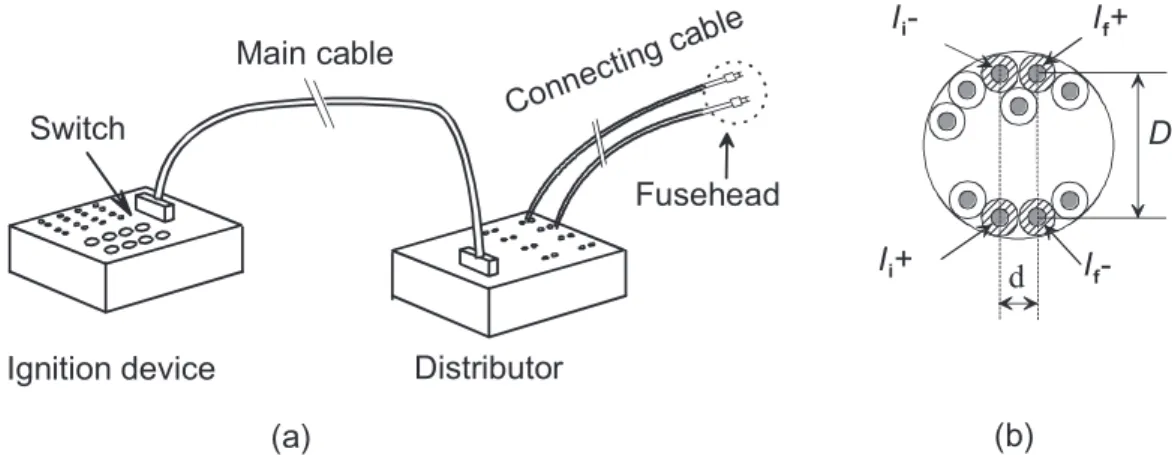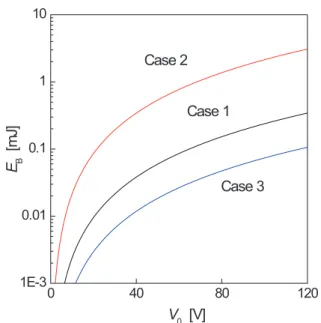1. Introduction
Electric ignition systems for launching fireworks have been gaining in popularity because of the ease of precisely controlling the launch timing and the ability to employ a remote control system, thus ensuring the safety of the operator. When a series of fireworks are launched in a display, a large number of fuseheads for igniting the lift charges of the firework shells are connected to the firing cables and await the firing signals. For convenience, multi- conductor cables are sometimes used instead of a large number of individual firing cables. However, when conductors are laid closely together in a cable, electromagnetic induction can occur among them, and this has been the subject of a considerable amount of research in a number of fields.
1)-4)A change in the firing current gives rise to an electromotive force in adjacent circuits consisting of conductors and the bridgewires of fuseheads.
If a circuit is closed by accidental or inadvertent shorting of a conductor at the end opposite to the fusehead, the electromotive force will induce a current in the bridgewire. If the induced current is sufficiently large, an unexpected ignition of the fusehead can take place.
In the present study, numerical calculations were carried out to investigate the possibility of such ignition occurring due to electromagnetic induction. Although various kinds of electric ignition systems are employed for
fireworks displays, the system considered here involved multi-conductor cables since such cables are becoming more commonplace.
2. Calculation model
A typical electric ignition system for launching fireworks is shown in Figure 1 (a). The ignition device contains batteries whose output voltage is several tens of volts, and switches with mechanical contacts to start the firing currents. A distributor is connected to the ignition device by a main multi-conductor cable and the firing currents are fed to a group of fuseheads through connecting cables.
The entire ignition system can be represented by a simple LR circuit, as shown in Figure 2, where &
!is the battery voltage, "
%is the firing current and "
&is the induced current to be solved. The sum of the resistances and self- inductances attributed to the ignition device, the main cable, the connecting cable and the fusehead in a circuit in which a current "
%is flowing is denoted by %
"and #
", respectively. Except for the contribution of the ignition device, %
#and #
#are similarly defined in a circuit with a current "
&flowing. The mutual inductance between two conductors with currents "
%and "
&in the main cable is indicated by $.
As typical multi-conductor cables for the numerical
Possibility of ignition of electric fusehead due to electromagnetic induction
Dongjoon Kim
*†, Shu Usuba
*, Yozo Kakudate
*, and Shuzo Fujiwara
**
Research Institute of Science for Safety and Sustainability, National Institute of Advanced Industrial Science and Technology, 111 Higashi, Tsukuba, Ibaraki 3058565, Japan
Phone : +81298614788
†

